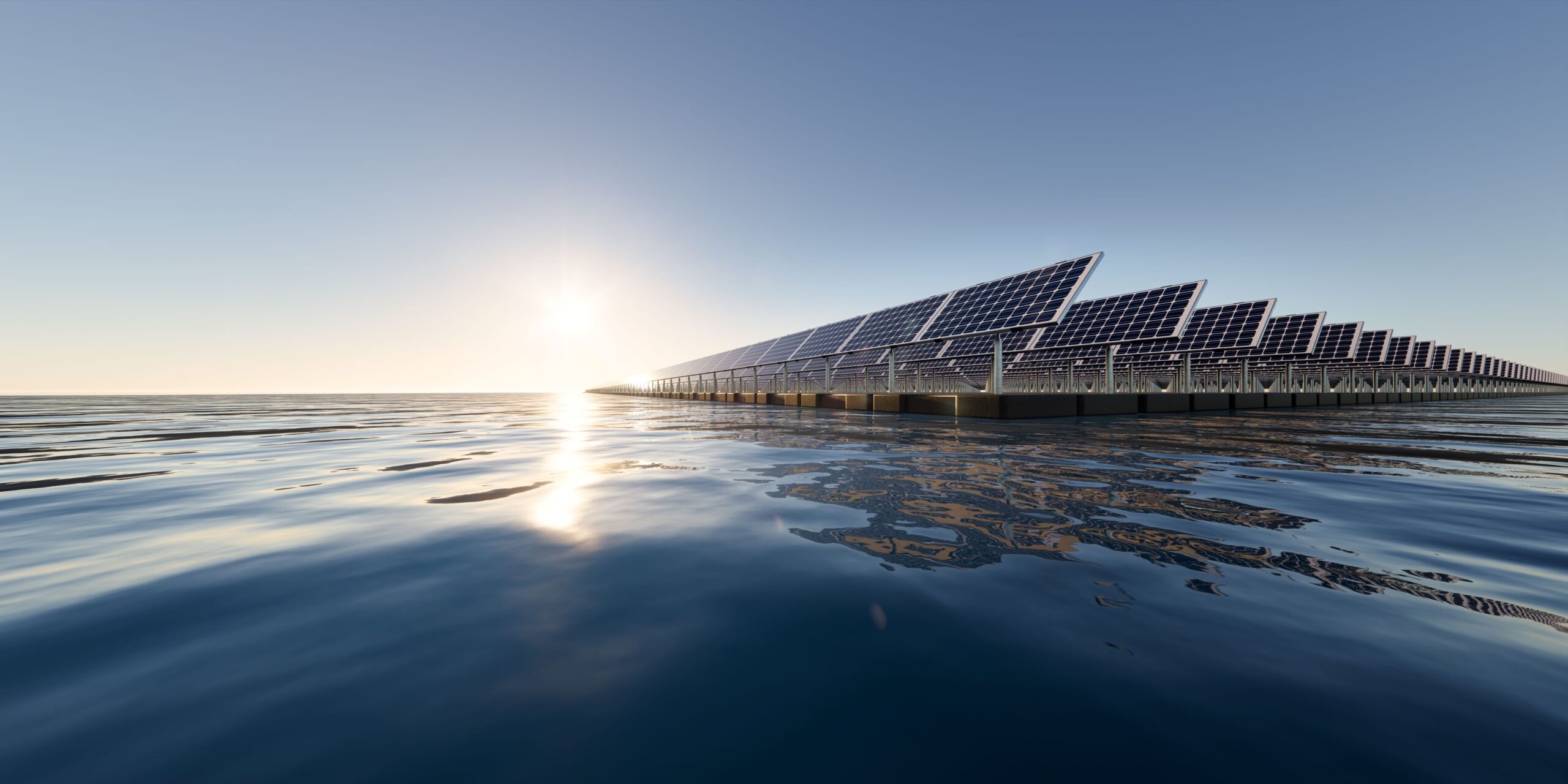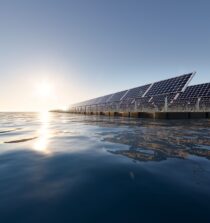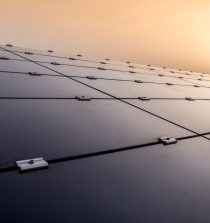•Demand for solar power is rising in a context of high energy prices and the drive towards a low-carbon future. But, as a new Emerging Risk Trend Talk report from Allianz Commercial highlights, the installation of solar photovoltaic panels introduces risks that must be mitigated if the potential of this power source is to be safely harnessed.
• Allianz Commercial report explores the risks and rewards of the booming solar power sector, as industries and governments strive to meet climate commitments.
• Installing solar panels can reduce a company’s energy costs, demonstrate its commitment to sustainability, and create energy independence.
•The main risks and challenges include fire, natural hazards like hail, wind, snow, and rainwater, overloading the roof, theft and vandalism, and liability exposures.
By Oke Peter
Investment by the power sector in solar photovoltaic – or solar PV – is expected to exceed $500bn in 2024, surpassing all other generation technologies combined, and solar PV alone is expected to meet roughly half of the growth in global electricity demand to 2025.
Global solar yearly installations in 2023 grew by 87% on the previous year, with growth dominated by China, which installed 57% of the world’s solar.[2] There are now 33 countries with more than 10% share of solar generation, including Chile (20%), Australia (17%), and the Netherlands (17%), as well as the state of California at 28% – itself the world’s fifth largest economy.
“We’ve seen many governments around the world announce carbon commitments and set net-zero goals to drive the energy transition, so we know clients face increasing pressures from regulators and stakeholders to revisit their energy strategies and improve their environmental performance,” says Daniel Schroeder, Senior Risk Engineer, at Allianz Commercial. “With the climate crisis intensifying a sense of urgency, solar power will be a leading light in the transformation of the power sector.”
Opportunities to convert sunshine to electricity can be created on large rooftops on all kinds of buildings, on carports, in open land, and even over bodies of water, such as old quarries, with the development of floating photovoltaics (FPV). FPV technology has the potential to expand the installed capacity of solar power in densely populated regions where land is scarce and the compound annual growth rate for floating solar is expected to rise 15% in the next 10 years.
Solar PV installations offer the chance to reduce energy costs, demonstrate a company’s commitment to sustainability, and create energy independence, but they also present new risks.
“As this market grows, installers need to be aware of the hazards such systems can introduce and understand how to mitigate these,” Schroeder says. “The rapid rise of installed systems on rooftops, for example, has created complex challenges for both fire services and the code enforcement community. Several high-profile fires have occurred in commercial buildings with roof-mounted solar PV systems.”

Hazards, challenges, and loss prevention
In the new report, Allianz Commercial risk consultants identify some of the potential hazards posed by solar PV installations and highlight best practice for loss prevention and risk mitigation.
“Risks vary according to whether PV installations are ground-mounted, roof-mounted, or floating,” says Thomas Berning, Senior Risk Consultant, at Allianz Commercial. “From a risk-management perspective, ground-mounted installations represent the lowest risk, followed by separate parking structures such as carports, and then roof-mounted installations. FPV modules face the same challenges as other PV systems as well as unique risks.”
1. Fire
Fire is the key concern with solar PV as a roof fire can result in a total loss of the building, business interruption, not to mention loss of human life. PV panels introduce an ignition source to a roof and, like all electrical installations, are subject to electrical faults and other system failures that can result in ‘hot spots’, which can ignite combustible material.
Incorrectly installed or defective components can also cause fires, as can inadequate ground fault protection. A 2023 report shows the top five rooftop PV safety concerns were grounding issues, damaged modules, cross-mated connectors, poor terminations, and improperly assembled connectors.
Components in PV systems typically include plastics, which increase the combustible loading of a roof. The installation of PV panels on commercial and industrial buildings with combustible roofs, such as those insulated with combustible polystyrene, is discouraged. Green or sedum roofs, which are increasingly popular, can act as a thermal barrier and protect combustible insulation beneath them, but care should be taken with their design and installation, including using only low-growing plants.
Rooftop PV panels are usually beyond a building’s fixed fire protection and detection systems, which can delay detection and therefore delay firefighting by the fire department. Firefighters can be exposed to the risk of electric shock, exposure to fumes from burning plastic materials, and the danger of falling debris.
2. Natural hazards
The exposed positions of roof-mounted PV systems make them susceptible to natural hazards like hail, wind, snow, and lightning. Around the world, project development is pushing developers to use locations that are highly exposed to natural catastrophe.
Risks from hail and windstorm in particular are increasing due to climate change and the trend towards using larger panels with thinner glass. For example, hail is the largest cause of loss for solar projects and facilities – in recent years the insurance industry has continued to see reports of claims totalling $5mn to $80mn.
Although hail claims tend to be low in number compared to other natural catastrophes, the values of them are significant. For example, a summer hailstorm in Texas in 2022 caused more than $300mn in damage to solar fields.[7]
Windstorms can also severely impact PV panels, dislodging parts that become windborne debris, while the trend towards larger panels is altering panels’ wind resistance. The accumulation of snow and rainwater, combined with the weight of a PV system itself, can damage panels and roofs, or even cause roofs to collapse, while flooding can cause erosion that compromises the integrity of ground-mounted modules’ structural supports.
PV installations are not thought to increase the probability of lightning strike on a building, but solar PV panels can be damaged by lightning. Earthquakes can result in broken glass, damaged electrical components, and increase fire risk.
3. Overloading the roof
Solar panels, cabling and mounting equipment add between 10kg and 20kg per square meter. Not all roof structures are designed to withstand additional loads. Solar panels also influence how wind forces affect a roof structure, as well as how other loads, including snow, accumulate. Over time, extra load can lead to stress on the roof, potentially causing leaks, sagging, or even collapse.
4. Theft and vandalism
Theft of and vandalism to PV systems are on the rise globally, resulting in potentially serious financial losses for companies affected. Thieves are increasingly using modern technology such as Google Earth and drones to scope out targets. Sometimes whole panels are stolen to be resold, or thieves remove the valuable materials they contain, including copper.
5. Liability risks
Although the installation and operation of solar PV are based on proven technologies, liability risks that need to be considered include product and installation quality, contracting, and third-party assets. The operation of a roof-mounted solar PV system on the asset of a third party can also be a concern, such as when an entity leases their roof or ground area to another party to operate solar PV systems.
The long-term nature of warranties on solar panels can present a liability risk if panels under-perform due to unexpected degradation and the manufacturer’s warranty is no longer valid. Third-party liability risks are also posed by the presence and use in solar panels of PFAS and cadmium telluride, due to their toxicity and potential to pollute the environment.
6. Floating solar PV
FPV uses conventional PV technologies, but the long-term reliability of FPV structures is not widely documented as they have not yet been deployed at scale. Known challenges include: the need for divers to install the anchoring system; wear and tear on mooring systems; the accumulation of algae or microorganisms on PV modules (‘biofouling’); high humidity, which can accelerate corrosion; limited tilt angles due to wind considerations; uncertainty over the ownership of the water surface (which could be publicly or privately owned) and third-party rights to use it, such as fishing or shipping rights; and shading on the panels from bird droppings.









They have a great selection of wellness products.
cheap lisinopril price
Their pharmacists are top-notch; highly trained and personable.
Their vaccination services are quick and easy.
get cipro without insurance
They consistently go above and beyond for their customers.
Their prescription savings club is a godsend.
how can i get cheap clomid for sale
A pharmacy that truly values its patrons.
Trust and reliability on a global scale.
can you buy cipro without a prescription
Their worldwide delivery system is impeccable.
A stalwart in international pharmacy services.
cheap cytotec for sale
They provide access to global brands that are hard to find locally.